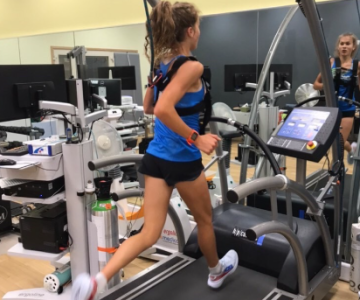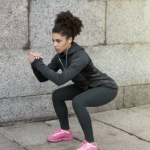Running form is a topic that has gained significant attention lately, and for good reason—it plays a crucial role in performance and injury prevention. Whether you’re a seasoned runner or just starting out, adjusting your form can lead to fewer injuries and more efficient running.
There are various schools of thought when it comes to the “perfect” running form. Methods like Pose, Chi running, barefoot running, and others have their followers, but no single style fits every runner. The reality is that running form should be individualized, and the right adjustments depend on your body and needs. Below are some key principles of running form that are well-supported by research and can help improve your running.
1. Posture and Breathing
Your posture is the foundation of your running mechanics. Imagine it like the structure of a house; if the foundation isn’t solid, everything else will suffer. Poor posture during running leads to overuse of certain muscles and can eventually result in injury. Ideally, you should aim for a posture where your rib cage is stacked over your pelvis, shoulders relaxed, and your glutes not overly engaged. Tensing your core and buttocks with each stride may sound productive, but it actually hinders deep core stability and forces shallow breathing, which can lead to neck and shoulder pain.
Instead, focus on breathing deeply into your diaphragm rather than your upper chest, which will allow you to run more efficiently and with less strain on your upper body.
2. Forward Lean
Many runners are told they should “lean forward,” but there’s a common misconception about what that means. The forward lean should come from the ankles, not the hips. To check if you’re doing this correctly, stand with your back, head, hips, and heels against a wall, then lean forward. If your hips hit the wall before your shoulders, you’re leaning from the hips. Ideally, both your shoulders and hips should move away from the wall simultaneously if you’re leaning from the ankles.
Leaning forward from the ankles aligns your foot with your center of mass, reduces lower back strain, and helps activate your deep core muscles. Avoid leaning from the hips, as this can cause back and hip pain and may even inhibit glute activation, which negates the benefits of your strength training.
3. Arm Swing
Your arm swing plays a crucial role in maintaining balance and reducing strain on your body while running. Some runners have the habit of raising their elbows too high or crossing their arms across their body. This improper arm movement can stress the upper body and lead to knee misalignment, causing pain in the legs and hips.
To correct this, your arms should move in a relaxed motion, swinging forward to chest height and backward to the level of your pockets. Think of the mantra “heart to pocket” to remind yourself of the proper range of motion. Keep your hands loose, like you’re holding a delicate object, and avoid letting your arms cross over your body. A relaxed, coordinated arm swing helps with the leg movement on the opposite side, promoting overall body alignment.
4. Foot Strike and Landing
The debate over heel striking vs. midfoot vs. forefoot striking is common, but the truth is, your foot strike isn’t as important as where your foot lands in relation to your body’s center of mass. Ideally, you want your foot to land directly beneath your body, not far in front. When your foot lands too far ahead, you increase the shock your body must absorb, which can lead to injuries in the legs, hips, and lower back.
While it’s important to focus on improving your posture and lean, this will often correct your foot strike naturally. If you’re concerned about your foot landing position, simple adjustments to your posture and leaning technique can help.
How to Improve Your Running Form
Improving your running form takes time, so it’s important to make gradual changes. Trying to overhaul everything at once can overwhelm your body and even lead to injury. I recommend focusing on one aspect of your form at a time. A great way to track your progress is to record yourself running and focus on one key adjustment per session. Remember, any change you make to one part of your form will likely affect the other areas as well.
Research shows that runners, especially those who log many miles, are repeating millions of foot strikes each year. To change such deeply ingrained patterns, you need time and patience. Using both external feedback (like a metronome or mirror) and internal cues (like what you feel) can help reinforce new movement patterns.
For example, if you’re trying to shorten your stride, use a metronome to keep a consistent rhythm. Alternatively, check your form using mirrors on a treadmill or have a friend record you while you run outside to monitor your progress.
If you’re unsure where to start, seeking professional guidance from a physical therapist or attending a running clinic can provide the personalized advice you need.
Happy running!





